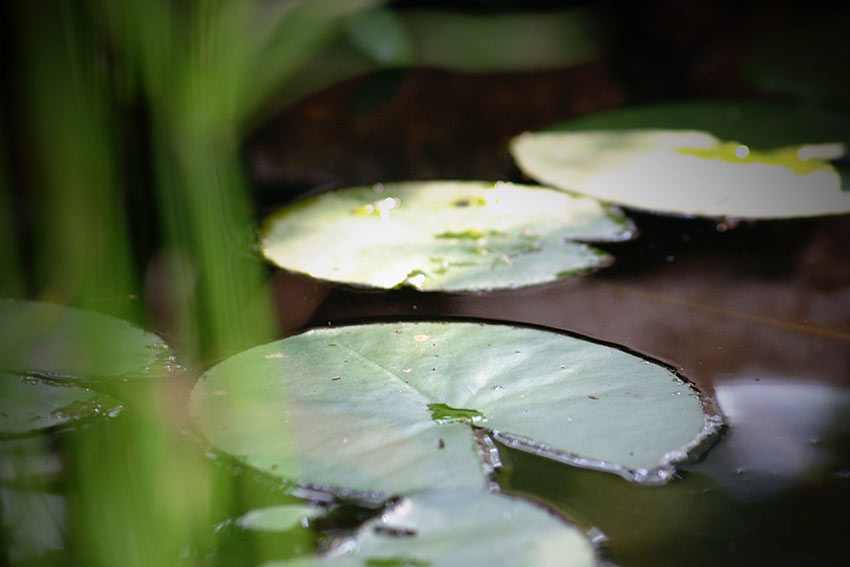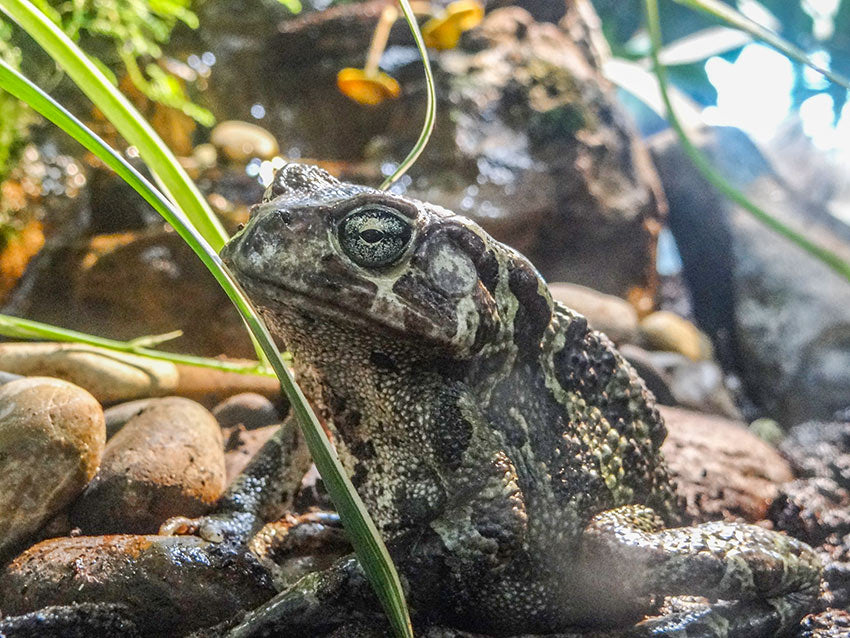We’d be the first to admit that toads and newts maybe aren’t quite as nationally beloved as hedgehogs or foxes, but they’re incredibly important to the ecosystem of British wildlife, acting as both prey and predator to others on the food-chain.
Since they’re so essential, let’s learn all about toads, newts, and how you might be able to attract more of both to your garden.
What is a toad?
According to the Oxford Dictionary, a toad is: “a tailless amphibian with a short stout body and short legs, typically having dry warty skin that can exude poison,” although you won’t need to worry about poisonous toads too much in Britain.
Toads like to eat crickets, grubs, slugs, snails, mealworms, flies, and spiders. Bigger toads may even eat mice, lizards, snakes, small fish, and other toads or frogs!
For most of the year, toads live in gardens, rough grassland, hedgerows, and woodlands. Then, in early spring, toads migrate to the pond where they were born to find a mate and reproduce.
What is a newt?
According to the Oxford Dictionary, as newt is: “a small slender-bodied amphibian with lungs and a well-developed tail, typically spending its adult life on land and returning to water to breed.”
Newts like to eat insects, worms, shrimps, snails, slugs, small crustaceans, and—bad news for frogs, toads, and other newts—tadpoles. Luckily, the breeding seasons are separate, so there’s less chance of newts discovering a feast of toad tadpoles.
When newts are born, they remain within water until they have matured to a point that they can travel on land, at which point they become truly amphibious. They return to water each winter to breed.
5 toads & newts you might find in your garden
-
Common Toad (Bufo Bufo):

- Warty, rough skin (easy to tell apart from the common frog with its smoother skin).
- Crawls instead of hopping.
- Found throughout Britain.
- Prefers deep water in lakes and fonds for laying strings of eggs.
- Tadpoles are black and swim in shoals.
-
Natterjack Toad (Epidalea Calamita):

- One of the UK’s rarest native amphibians (only found in about 50 areas).
- Mainly found in the sand dune systems of Solway, Cumbria, Merseyside and North Wales.
- Green, cream, or brown colouring with short legs in comparison to the common toad.
- May run fast, but swims slowly.
- Has a very loud, distinctive call.
- Prefers to breed in warm, shallow ponds.
-
Smooth Newt (Lissotriton Vulgaris):

- May grow up to 10cm.
- Often found in UK ponds or pools
- Usually a mix of grey and brown, although the male develops an orange crest with black spots during the breeding season.
- Known for its love of eating frog tadpoles.
-
Palmate Newt (Lissotriton Helveticus):

- Can grow up to 5-9cm (the smallest of the common UK newts!).
- Sports a yellow belly and a pink or yellow throat (not spotted like the smooth newt).
- There is no colour change during the breeding season, but males grow black webbing on their hind feet during the breeding season.
- Prefers shallow ponds in acidic soils.
-
Great Crested Newt (Triturus Cristatus):

- Can grow up to 15cm long.
- Dark or black warty skin.
- Males have a “dragon crest” that becomes more obvious during the breeding season.
- Males also have a white flash on their tale; females have a yellow flash.
- Due to loss of habitat, this species is rapidly declining.
Attract toads and newts with a pond:

As you might expect from two amphibians, toads and newts love ponds, and they’re not the only ones! Ponds are an invaluable habitat for garden wildlife, attracting all kinds of creatures, whether they stop by for a quick drink, take a dip to cool down on hot days, or require an underwater area for mating and giving birth.
The latter is especially important for toads and newts, both of which lay their eggs underwater. Newts even perform their courtship rituals underwater.
As long as you take precautions like mesh wire for less water-confident species to avoid falling in, such as hedgehogs, moles, or even small children, a pond can create a safe space for many different species—not to mention that they’re a calming presence in your home environment.
If you want to make a garden wildlife pond for yourself, use this step-by-step pond making guide from the nature lovers at Countryfile. If there’s anyone that knows their way around making British wildlife happy, it’s them!
Get to know your garden wildlife!
We’ve been spawning all kinds of information related to garden wildlife lately, so if you’re still hopping about for more, you might like:
- Beginner’s Guide to Garden Wildlife
- Beginner’s Guide to Hedgehogs
- Beginner’s Guide to Foxes
- Beginner’s Guide to Birds
- Beginner’s Guide to Voles
Of course, if your garden needs any tidying up before the garden wildlife appears, you know where to come for Cordless Garden Equipment.


